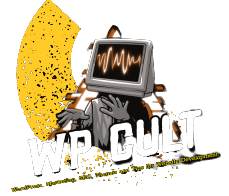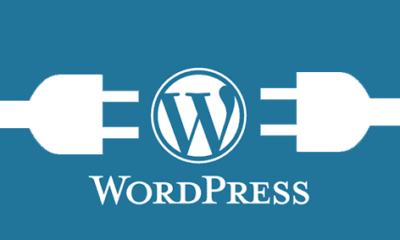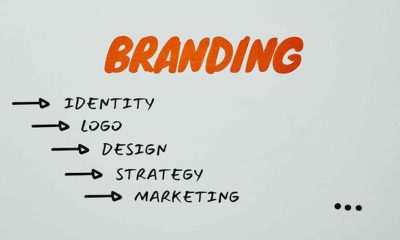Guest Post
Your PreLaunch eCommerce Checklist Not to Miss
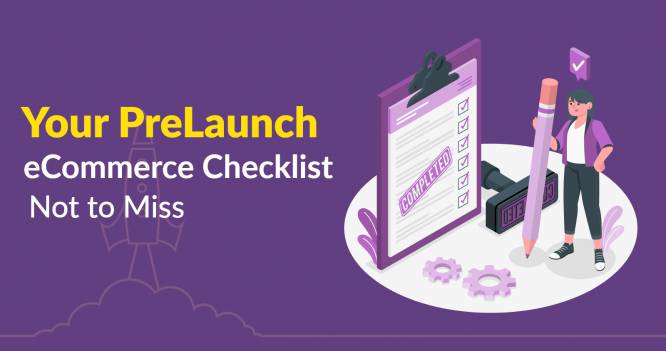
Launching an eCommerce store takes way more than just having a website. It encapsulates a thorough consideration of various key elements before the launch of your website. Failing to do so cost you sales, revenues, and customer trust.
In this post, we are going to share your essential website prelaunch checklist, you wouldn’t want to miss out on. So, without further ado, let’s get started.
- Pay attention to the design of category or listing pages
Help your customers easily find the products they are looking for. A coherent eCommerce website with well-designed pages doesn’t go amiss.
Properly designed category pages optimized for SEO allows your customers to find the product of their choice. It also speeds up the checkout process which is a critical element ensuring higher customer satisfaction.
Designing listing pages requires you to have the following key elements:
- Include a quick product view.
- Facilitate internal linking between categories and subcategories.
- Show stock availability.
- Have filtering and sorting options in place.
- Display best-sellers and customer reviews for social proof.
- Make sure you have an effective shopping cart page
Another vital element on your eCommerce launch checklist is an efficacious shopping cart page. The shopping cart is an extremely important place in your eCommerce store.
So, how do we go about creating an engaging shopping cart page? Let’s get you started by sharing these key pointers.
- Avoid having any hidden costs, taxes, and shipping costs.
- Have an attention-grabbing ‘call to action’ for clear navigation.
- Display product details such as the product name, size, color, pricing, and quantity for an enjoyable shopping experience.
- Allow customers to add/remove products and change color, size, and quantity with sheer ease.
- A well-designed and conversion-oriented checkout page
Let’s face it! The checkout page is the place where cart abandonment happens the most.
As a far-sighted business, you must ensure that the checkout process is smooth for your customers.
There are countless eCommerce stores in the digital scape and cart abandonment is a sore point for the majority of them and clearly due to the lack of a well-designed checkout page.
- Have a progress bar page right from the beginning to help customers know how many steps are left to complete the buying process.
- Have a live chat option to provide timely support to your customers.
- Refrain from adding unnecessary steps and combine multiple steps if needed as it will help expedite the whole process.
- Have ‘checkout as a guest’ option in place.
- SEO is important
Your eCommerce store needs to have a robust SEO strategy in place to drive conversions. It is a myth that SEO is dead and numbers vouch for the fact.
More than 37.5 percent of eCommerce traffic comes from search engines and if you do not invest in SEO with a well-chalked-out plan, you are surely missing potential possibilities. You will be left far behind in the competition. So, here is a quick SEO cheatsheet for you.
- Create and submit a sitemap.
- Leverage schema markup to increase the click-through rate.
- Make sure your target keywords are included in the product descriptions and categories.
- Make optimum use of keywords in meta titles, descriptions, and tags.
- Optimize your eCommerce website for speed.
- Focus on creating high-quality and SEO-rich content.
- Get rid of duplicate content.
- Harness 3rd party apps and plugins on your eCommerce store
There are numerous useful 3rd party apps out there in the WooCommerce space and you can use them to your advantage for better customer experience and conversion rates.
It is no exaggeration that your eCommerce launch checklist is incomplete without considering to use 3rd party apps and plugins. Some of the apps/plugins you may want to use are mentioned below –
- Site optimization.
- Apps/plugins for products and inventory management.
- Apps/plugins for marketing and promotion.
- Apps/plugins for better sales and conversion.
Speaking of the best WordPress plugins, we would like to share two of the most trusted plugins out there in the market. The first one on the list is a WooCommerce category plugin named:
- Product Categories Designs for WooCommerce
The plugin is loaded with 2 wonderful layouts and 10 marvelous designs for WooCommerce categories. It offers a categories grid and carousel view.
The best of this plugin is its seamless integration with all popular page builders including DIVI, WPBakery, VC Composer, Beaver, and Elementor to name a few.
More features:
- Change post order
- Display category title and description
- 2 shortcodes
- Include or exclude specific categories
Another plugin on the list is a great plugin for product sliders in WooCommerce called
- Woo Product Slider and Carousel with Category
Woo Product Slider and Carousel with Category is a renowned plugin that is equipped with more than 50 predesigned templates and 8 layouts. You can put several sliders on display including best-rated products, best selling products, featured products, etc.
More features:
- Show product rating
- Display sales
- Custom CSS editor
- Fully responsive
- Multi-lingual support
- Easy integration with famous page builders
- Use email marketing to your advantage
Prudent eCommerce businesses use email marketing quite deftly to their advantage and you must also include it in your WordPress website checklist. There are different types of marketing emails you should use such as –
- Welcome or thank you emails.
- Survey emails.
- Cart abandonment emails.
- Order confirmation emails.
- Promotional offers and festive discounts.
- Setting up analytics
This is a no-brainer, to be honest. No eCommerce business can be imagined without analytics. Make sure you have set up Google and Facebook analytics without missing any key steps.
Also, verifying checkout tracking is important for your eCommerce store. Set up a Google search console and verify your site.
- Download backup of your site
This is one of the most crucial steps you should always bear in mind. You shouldn’t take for granted even a small change you made, because you don’t want to be in a situation when you cannot revert the changes. Also, use the services of a reputed hosting provider as it always helps you a big time. Make it a point to download the backup of your staging as well as the production site.
- Run a mock order test
Perform a mock order test before you launch your website. It should include auditing the whole checkout process of the cart and order confirmation. It goes without saying that you should include all the possible steps your customers would take in a real case scenario. Add a product and increase/decrease the quantity to make sure it is working. Add products to the cart and remove them apart from applying coupon codes.
Here it is also important to see how the product page appears when a product is out of stock. Make a test purchase by checking out the cart, of course besides checking the payment options on there. Once the mock purchase has been made, head back to the My Account section.
- Migrate your website files and DB from staging server to production
You must be working on a staging server and now it is time to move your website files and database to the actual production server. Again, before you do this, you must take a comprehensive backup.
- Enable search engine visibility
Enabling search engine visibility is of utmost importance if you want to be discoverable on search engines. To do this, go to your WordPress dashboard, look for settings and click ‘reading’.
Now look for ‘Search Engine Visibility’ and uncheck the box that reads ‘Discourage search engines from indexing the site’.
Publish changes and you are good to go.
- Install SSL certificate
Installing an SSL certificate is quite crucial if you do not want to face issues later on. It isn’t as complicated as it might appear at first. Install the certificate and activate it and once it is done, you will be able to see a padlock on the address bar.
Your hosting provider should be able to help you with this as well, so if you do not know how to go about it, do not fret.
- Submit your sitemap
Submitting your sitemap to search engines allows them to index your website; however, it should be done only after you are set up 301 redirects correctly.
Submitting your sitemap is fairly an easy process and by following just a handful of steps on Google Console you should be done.
Simply log in to your search console or create if you don’t have one already. Look for sitemaps and click on them. Submit your new sitemap and if you are using an SEO plugin such as Yoast SEO, then the link will show something like this- /sitemap_index.xml
Hit ‘Save’ and that’s it.
Conclusion:
Only a future-ready eCommerce business can survive in the cut-throat competition of the contemporary eCommerce market. We have tried to make the WordPress website checklist as comprehensive as possible. If you keep the abovementioned pointers in mind, you will see boosted sales and Increased profits.
Author Bio:
Amisha Parmar is a content writer and SEO marketing manager at Essential Plugin, which sells a WordPress Plugin Bundle that includes front-end utility plugins. Expert Inbound Marketing Tools, Templates, and Security are required for the overall development of a WordPress website.
Guest Post
5 Reasons Why You Should Or Should Not Use WordPress Plugins
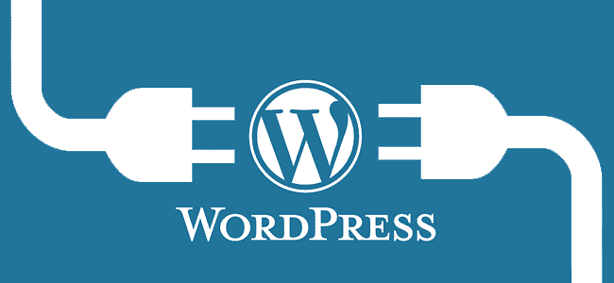
Depending on your needs, WordPress plugins are the best and worst aspects of WordPress. The whole purpose of plugins should be to provide a certain function or solve a very specific problem. They should never be used unnecessarily to satiate a desire to indulge in brand new technology. WordPress plugins can be a real-time-saver but they can also allow you to be lazy when creating your website. The real key is knowing when you should use them and when it is best to avoid the use of plugins. Below, we discuss five reasons to use plugins and five reasons not to.
When You Need Plugins
1- For Speed
You can greatly speed up your WordPress posts and pages by using a plugin such as WP Super Cache. This allows you to make static HTML versions of your posts and update them as and when you choose. If you receive a lot of traffic, this is useful as it reduces the need for server-side processes to generate a post when a visitor looks for it. Super Cache is capable of almost tripling page loading speed in some cases.
2 – Anti-Spam
If your blog is popular and receives a huge amount of comments, it can be a pain weeding out the spam comments left by trolls with nothing better to do with their day. Thanks to Akismet, you can filter out spammers that are registered on the Akismet database. This plugin is known to remove over 99% of spam comments.
3 – When Search Engines Bypass You
Google XML Sitemaps Generator enables search engine spiders to index the content of your website. It alerts search engines every time there is new content on your site which is ready to be indexed. The regular index is one of the keys to a high search engine ranking.
4 – When Your Site Needs More Traffic
The All in One SEO pack plugin is known to improve the search engine ranking of websites. If you want visitors to locate your shiny new website, you need help with SEO. If you can’t rank in the top 30 results for keywords related to your industry, very few people will ever find your site.
5 – To Improve User Experience
PageNavi is a terrific plugin as it provides your website with a pagination feature. Essentially, this means your visitors can quickly and easily find your old posts. You can customize it to meet your specific needs and increase the possibility of visitors returning to your website.
When You Don’t Need Plugins
1 – If You Are Indecisive
WordPress plugins are supposed to save time but if you are guilty of frequent procrastination, you might be better off ignoring them. Picture the scene: You find one plugin and install it only to find one that is superior soon after. You remove one to install the other and continue to add plugins. The extra lines of code added to your template weigh your site down. Each plugin could potentially add additional time to the loading process. Impatient visitors will not wait 10 seconds or more for a page to load.
2 – You Understand That Basic Functions Are All You Need
Knowledge of the WordPress content management system is all you need when you decide to publish your content. You should have immediate functionality and if there are new features worth installing, they will be added in upcoming releases. Simply upgrade these features as and when they come available rather than searching for something new.
3 – When You Value Content Over Excess Style
It is important to remember that you are creating the site for your target audience and don’t need the approval of other website owners. Your customers want a clean structure and useful material. When trying to make a sale, the most important thing to remember is that you want to show them why they need the product/service rather than trying to impress them with a fancy website. Concentrate on improving user experience through videos, images, or text. If you have time for added plugins, perhaps you can go ahead. Otherwise, focus on the basics first and don’t complicate matters needlessly.
4 – You Want Reliability & Speed
But didn’t we just say that plugins can speed up your website? Yes, we did but there is also the possibility that plugins will slow down your website as they force search engine spiders to read more lines when crawling your website. With more lines comes a greater possibility of bugs in your code. Negative reports by search engine spiders can be very damaging so bear this in mind when considering plugins.
5 – You Don’t Like Shortcuts
When used correctly, plugins can greatly improve your website in terms of improving page loading speed, removing spam comments, and enhancing customer experience. Yet when it goes wrong, it can go badly wrong, especially when you are unfamiliar with plugins. If you are of the belief that shortcuts usually lead to inferior
results, perhaps you should steer clear of WordPress plugins.
There are good, bad, and ugly sides to WordPress plugins. They often encourage sloth as creators of websites think plugins are some sort of magic pill. In addition, the ease of use of the existing WordPress system is a thing of beauty and is something that should not be trifled with for no reason. On the other hand, if you have WordPress plugin expertise, there is little you can’t do to improve your site using these tools. In the end, it is a matter of necessity, time, and skill level.
An article is written by Sara Carter. I like social networks, Google android, http://www.mac-reviews.net/, and psychology. I’m interested in IT services, computer upgrades, computer repair, different computer apps. Love traveling and skiing.
Guest Post
Adsense Pro Ultimate – Top Selling CTR Worpress Theme Review

Classic CTR Themes For WordPress have made it pretty easy to build informational websites using Adsense that can get you awesome click-through rates (CTR). Adsense provides you the ready-made income at home and is a great way to earn money in a short amount of time by placing ads on your website, but usually, these sites let you have a great amount of money on the table because of not very good looking designs and under-optimized ad placements.
If you are seeking out an Adsense theme then Adsense Pro Ultimate Theme (or APU for short) ought to be at the top of your list. Although you will find other themes available as a rule you have to pinch them and add extra icons as well as play with the code like PHP, HMTL, and CSS. In fact, most of the Adsense styles are ready-made Adsense and not Adsense optimized. It is almost like the difference between HD ready and full HD, I would for sure, try to go for the 1080p television because of the higher quality. Though 720p is not that bad it is not the top dog in the town.
The Adsense Pro Ultimate CTR Theme is by and large a WordPress theme that is solely built to get monetized with the Adsense to generate you some extra profit or money. This theme is completely optimized and made for the purpose to get the highest possible click as a result of better ad placement, so that you can have a better income, just with the help of this theme. Google has recommended this Ad placement strategy to be used when for better ad placement and profits.
With the help of CTR themes such as APU, Magnum, and others, you have the ability to turn any site into a money-making machine but then again it can only be done when you have got sufficient knowledge about site-building and maintenance.
Adsense Pro Ultimate CTR Theme really works!
If you want the best Adsense WordPress theme then you need to choose WordPress themes from ctr-themes.com. Unlike other themes which need to be tweaked these themes are already Adsense made and you do not have to do a lot of doodling with the PHP and CSS too.
Most of the Adsense themes are Adsense ready, not Adsense optimized. There are a lot of Adsense templates that focus on placing the ads on the header and some ads on the sidebars, I’m quite sure that you have seen plenty of such websites. Ad placement is quite broad and varied plus you also have the option to fully control the ad placement
When all of this trickles down to showing or hiding ads from the viewers not a single other theme comes in the way of the Adsense Pro Ultimate WordPress theme. You can hide ads with one click so that they do not get displayed when you are trying to get your site listed in the search engines and you always have the option to prevent showing your ads.
How is it different from the Competitors?
When you compare Adsense Pro Ultimate CTR Theme with other competitor themes, you always get the advantage. No other theme is so easy to use than this. There is an administrative panel installed in this theme that lets you change the ads and place them elsewhere without changing the original codes of the theme.
Besides this, it also provides a better and faster loading speed for your site. If you get into any trouble then there is always a panel of highly professional individuals who will help you 24/7.
Results
The result is quite obvious. With Adsense Pro Ultimate your AdSense website can generate more revenue when visitors click on the ads placement using the layout algorithm.
Musab Zain is a web developer by profession, who loves creating stunning Adsense WordPress Themes for his customers. More on his work here: ctr-themes.com
Guest Post
How to Incorporate a Website into Your Website Marketing Efforts
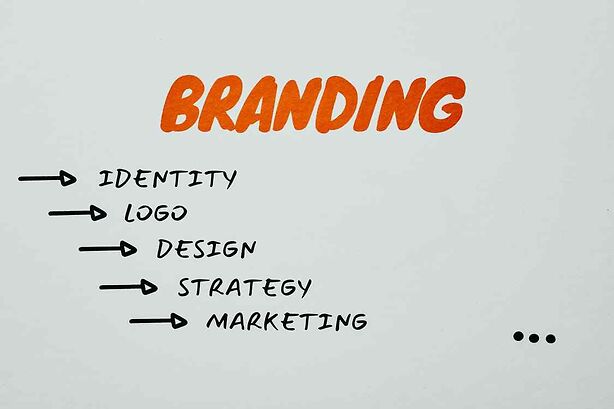
In today’s techno-centric culture, you simply must have a business website, no matter how small or “local” your restaurant business is. Consider the fact that the Yellow Pages (yes, that big book that you use to swat flies) has even gone the way of the web. Just as you wouldn’t dream of operating a restaurant without having a telephone number, you shouldn’t miss the boat when it comes to having a business website. Here are some great tips for how to incorporate a website into your restaurant marketing efforts:
The makings of a good website. You don’t need fancy graphics and a complex sitemap to have a good website for your restaurant. Really, you just need to incorporate some basics into your web design to have a site that can effectively speak for your business. At the very least, you should include details about your location, contact information, hours of operation, pricing, and menu items. Ideally, you can also use your website to spotlight members of your team, express your philosophy, detail the history of your business, and show web surfers what your restaurant looks like.
Promotions. You can use your restaurant website to promote upcoming events, seasonal menu items, and special discounts. By highlighting promotions on your site, you encourage your customers to check in regularly for updated information. This is a great way to stay in regular contact with patrons who may otherwise slip off your radar.
Reservations via the website. Most people these days use the Internet to decide on everything from which family practitioner they take their children to to which restaurants they eat in. You can offer them a major convenience (and snag those potential customers who may be just “shopping around”) by allowing them to make dinner reservations via your online interface.
Include your URL on all of your marketing materials. Once you have your website up and running, you need to put it to work for you. That means spreading the word. The best way to make people aware of your website and inspire them to pay a visit is to include your URL on everything from business cards to menus to signage. To really impress patrons with your modernity, incorporate QR codes into everything related to your restaurant; one quick scan from any smart phone will deliver customers straight to your website.
As you can see, there are many exciting ways you can use the web to improve upon your restaurant marketing efforts. Try not just one, but all, of these methods to get the most out of your business website.
About the Author: Brian Rage recently opened his own restaurant. He set up his new restaurant point of sale system, created stunning elegant menus, and finally had his website designed to match his theme. Talk to a marketing expert if you aren’t sure how to create or run a website.
-
Tips & Tricks2 weeks ago
WordPress Security Hacks
-
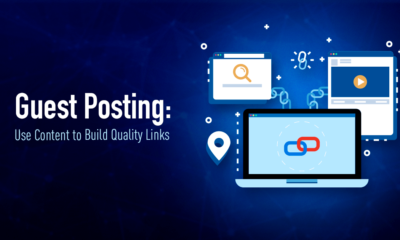
 Pages3 months ago
Pages3 months agoWrite For Us – Guest Post
-
Showcase3 months ago
StylizedWeb.com
-
News3 months ago
How to: Show/Hide any div box with jQuery in WordPress
-
Tips & Tricks2 months ago
Remove the title attribute using jQuery
-
Tips & Tricks7 months ago
How to: show/hide a widget in WordPress with jQuery
-
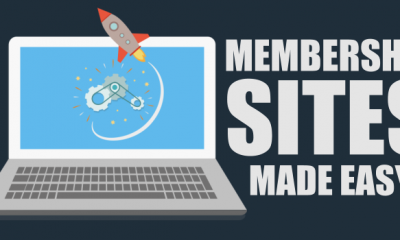
 Plugins7 months ago
Plugins7 months agoTop Membership plugins
-
Tips & Tricks3 months ago
Limit the characters that display on the_title



